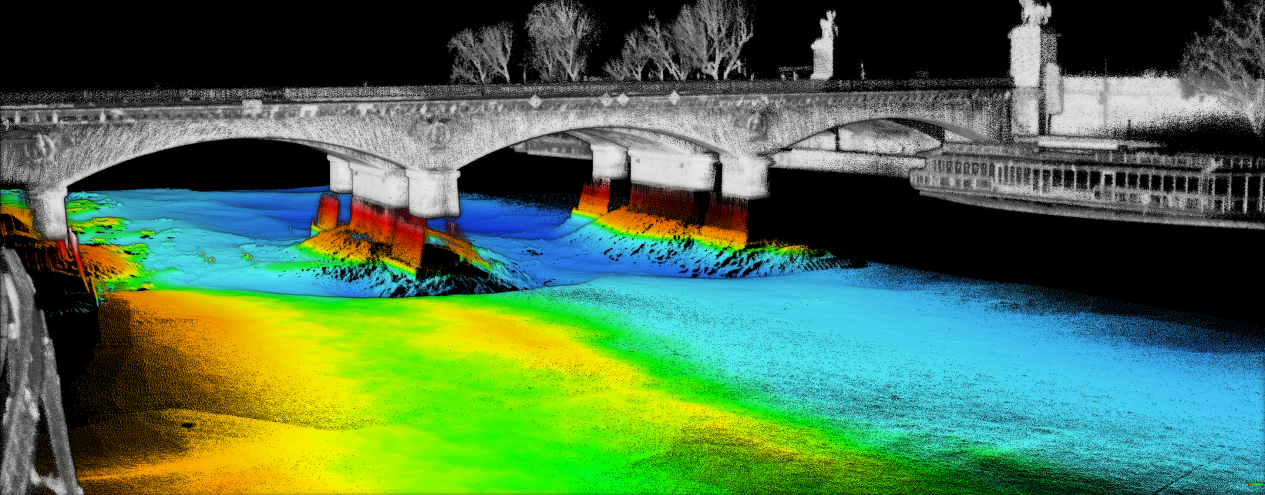ម៉ាស៊ីនវាស់សំណើម និងអំពើល្បាយប្រៃ គឺជាឧបករណ៍សំខាន់ៗសម្រាប់បកស្រាយនូវសម្បត្តិនៃទឹក ថាតើវាជាការសិក្សាផ្នែកបរិស្ថាននៅក្នុងសមុទ្រជ្រៅ ឬទឹកផ្សោត។ ម៉ាស៊ីនវាស់ប្រភេទនេះផ្តល់ព័ត៌មានដែលមានតម្លៃ ដើម្បីជួយអ្នកវិទ្យាសាស្ត្រ និងឧស្សាហកម្មឱ្យយល់ដឹងពីរចនាសម្ព័ន្ធទឹក និងតាមដានបរិស្ថានជុំវិញ និងការគ្រប់គ្រងទឹកប្រកបដោយនិរន្តរភាព។ នេះគឺជាវិធីដែលពួកវាត្រូវបានប្រើក្នុងការសិក្សាអំពីសមុទ្រវិទ្យា និងទឹកវិទ្យា។
ការវាស់អាគុយលញ៉ាសម្រាប់ការស្រាវជ្រាវមហាសមុទ្រ
ជាតិអំបិលជាកត្តាមួយដែលបង្ហាញពីអ័ក្សធំៗនៃការស្រាវជ្រាវចរន្តសមុទ្រ ល។ ទំរហ្វឹកទំរនៃអាកាសធាតុ និង ផែនការណ៍នៃជីវជាតិក្នុងសមុទ្រ។ ជាតិអំបិលត្រូវបានវាស់វែងយ៉ាងត្រឹមត្រូវដោយប្រើឧបករណ៍វាស់វែងសីតុណ្ហភាពដែលវាស់វែងនូវសីតុណ្ហភាពនៃទឹក ដែលអាស្រ័យលើអំបិលដែលរលាយក្នុងទឹក។ ដោយប្រើទិន្នន័យនេះអ្នកស្រាវជ្រាវអាច:
សង្កេតមើលចរន្តទឹកសមុទ្រ និង ឥទ្ធិពលរបស់វាដែលមានលើអាកាសធាតុនៅជុំវិញពិភពលោក។
ស្រាវជ្រាវប្រព័ន្ធអេកូឡូស៊ីសមុទ្រ និង គំរូនៃការចែកចាយនៃប្រភេទ។
វាយតម្លៃផលប៉ះពាល់នៃការហូរចូលនៃទឹកសាបដោយសារតែការរលាយនៃទឹកកក ឬដោយសារតែការហូរចេញនៃទន្លេ។
តាមដានគុណភាពទឹកនៅក្នុងប្រព័ន្ធអ៊ីដ្រូឡូស៊ី
ឧបករណ៍វាស់វែងសីតុណ្ហភាពរួមបញ្ចូលការតាមដានការផ្លាស់ប្តូរទឹកដែលអានដោយឧបករណ៍វាស់សីតុណ្ហភាពដែលត្រូវបានដំឡើងនៅក្នុងទន្លេ បឹង ឬ ទន្លេមាត់សមុទ្រ (តាមដានការផ្លាស់ប្តូរនៃរចនាសម្ព័ន្ធទឹក) ដើម្បីចាប់សញ្ញាណ៍ពីការបំពុល ទឹកសំណល់ឧស្សាហកម្ម ឬ ការផ្លាស់ប្តូររបស់រ៉ែធម្មជាតិ។ ផ្អែកលើព័ត៌មាននេះ អ្នកជំនាញផ្នែកទឹកប្រើវាដើម្បី:
ស្វែងរកប្រភពនៃការបំពុលក្នុងប្រព័ន្ធទឹកសាប។
វិភាគសុខភាពនៃជីវិតក្នុងទឹក
បញ្ជួនដំណើរការសម្អាតទឹក និងការអនុរក្សទឹក
គាំទ្រការសិក្សាអំពីការប្រែប្រួលអាកាសធាតុ
ការកើនឡើងនៃកំរិតទឹកសមុទ្រ និងការផ្លាស់ប្ដូររបស់របៀបប្រៃភាពគឺជាសញ្ញាសំខាន់ៗនៃការផ្លាស់ប្ដូរអាកាសធាតុ។ ការតាមដានជាបន្តបន្ទាប់នូវភាពចំលង (Conductivity)/ប្រៃភាពគឺមានប្រយោជន៍សំរាប់អ្នកវិទ្យាសាស្រ្តក្នុងការ
ស្រាវជ្រាវអំពីការផ្លាស់ប្ដូរនៃកំហាប់ទឹកសមុទ្រក្នុងការកើតឡើងនៃចរន្តទឹកមហាសាគរ
ពិនិត្យមើលផលប៉ះពាល់នៃការរលាយទឹកកកលើប្រៃភាពតាមឆ្នេរ
ធ្វើឱ្យប្រសើរឡើងនូវគំរូអាកាសធាតុដោយប្រើទិន្នន័យពិតប្រាកដតាមពេលវេលាជាក់ស្ដែង
អនុញ្ញាតឱ្យមានការត្រួតពិនិត្យដោយស្វ័យប្រវត្តិ និងពីចម្ងាយ
ឧបករណ៍វាស់វែងភាពចំលង (Conductivity) សម័យទំនើបត្រូវបានបញ្ចូលទៅក្នុងយានដំណើរការដោយស្វ័យប្រវត្តិក្រោមទឹក (AUVs) ទូភ្លើងនិយតករ និងការកត់ត្រាទិន្នន័យតាមចំណុចឆ្ងាយ។ វាអនុញ្ញាតឱ្យមានការប្រមូលទិន្នន័យដោយគ្មានការបំបែកក្នុងតំបន់ដែលគ្មាននរណាម្នាក់អាចចូលដល់បាន និងក្នុងពេលវេលាជាក់ស្ដែង ដោយការសាកល្បងដោយដៃតិចតួច។
ការរចនាដែលមានភាពធន់ទ្រាំសម្រាប់បរិស្ថានដ៏អាក្រក់
អង្គប៉ាន់ស្ទង់ដែលត្រូវបានរចនាឡើងមានគុណភាពខ្ពស់ ដែលធានាបាននូវការប្រើប្រាស់បានយូររបស់អង្គប៉ាន់ស្ទង់សីតុណ្ហភាព ដោយទប់ទល់នឹងជលផ្លូវកំប៉ុស និងបរិយាកាសដែលមានសម្ពាធខ្ពស់ និងការបំបាក់បំប៉ិនអ៊ីដ្រូកាបោន ដែលអង្គប៉ាន់ស្ទង់ទាំងនោះត្រូវប្រឈមមុខនៅពេលដែលវាត្រូវបានដំឡើងប្រើប្រាស់ជាយូរមកហើយ។
សេចក្តីសន្និដ្ឋាន
អង្គប៉ាន់ស្ទង់សីតុណ្ហភាព និងអំបិលមានតួនាទីសំខាន់ក្នុងវិទ្យាសាស្ត្រសមុទ្រ និងវិទ្យាសាស្ត្រទឹក ពីព្រោះវាជួយបង្ហាញរចនាសម្ព័ន្ធទឹក ភាពសុទ្ធ និងគំរូអាកាសធាតុ។ ដោយសារបច្ចេកវិទ្យាអង្គប៉ាន់ស្ទង់មានការអភិវឌ្ឍន៍ អ្នកវិទ្យាសាស្ត្រនឹងអាចប្រមូលទិន្នន័យបានកាន់តែត្រឹមត្រូវ ដើម្បីជួយពួកគេក្នុងការគ្រប់គ្រងនូវភាពចីរភាពរបស់ទឹក និងការអភិរក្សសត្វសមុទ្រ។

